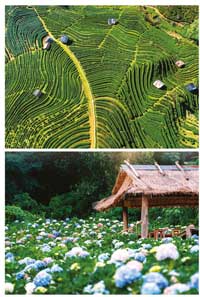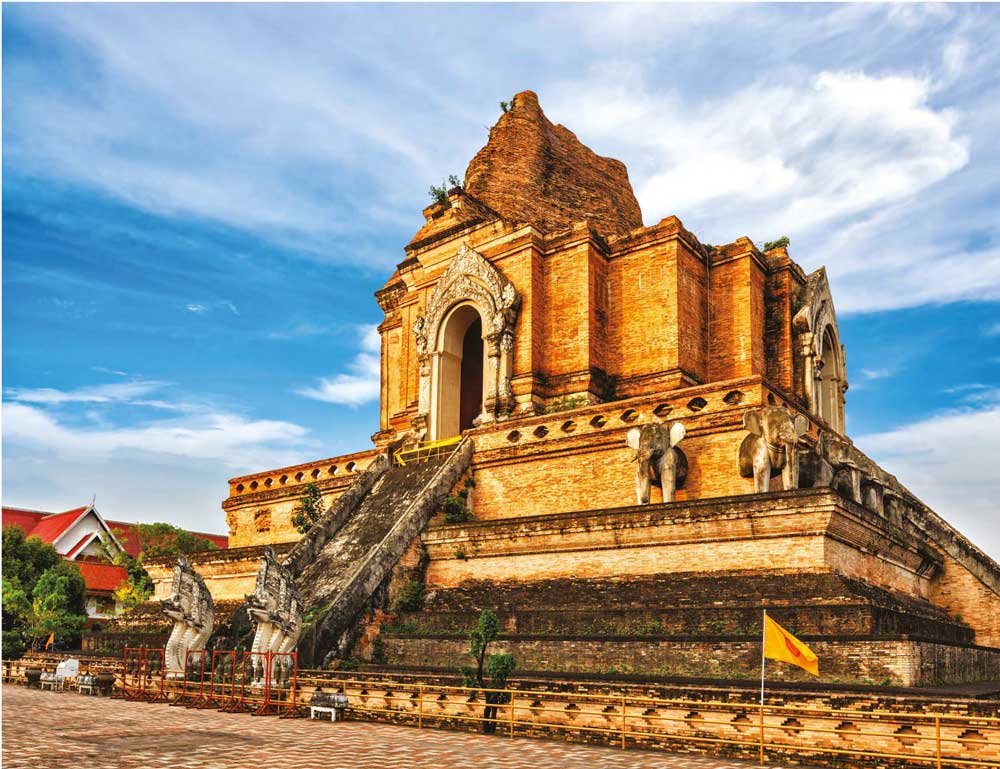THAI HERITAGE
Wish you were here
Ancient city of temples
Sandip Hor tours the city of Chiang Mai for a taste of its beauty and culture

Chiang Mai is the gateway to Thailand’s north; it offers visitors a cool change from Bangkok, which is some 700 kilometres away. The city is tucked away in a scenic mountainous environment where fresh air and clear blue skies are the order of the day.
A few decades ago, the city was rather laid-back. But with the growth of tourism and a large number of expatriates living in Chiang Mai, it is now a trendy and cosmopolitan metropolis.
The draw card of this city, which was founded in 1296, is its rich cultural heritage. This is seen in its ancient temples, vibrant festivals, authentic Thai cuisine and enchanting local markets filled with the intricate craftsmanship of native artisans.
WHERE TO STAY There’s no shortage of accommodation options to suit all tastes and budgets.
The 277 room Shangri-La Chiang Mai promises a family-friendly luxury experience, is home to the largest pool in the city, and provides easy access to the Night Bazaar, Old City and transport for onward adventures. It is an ideal abode for guests who are looking to indulge, unwind, discover and explore.
WHAT TO EAT Chiang Mai’s cuisine comprises large mains alongside smaller snacks and appetisers. The city is filled with restaurants, street food vendors, and markets that play host to locals and visitors who try out their delicious dishes.
The locals usually recommend nam prik ong, which is a pork and tomato chilli dip; kaeng hang lay – a pork and ginger curry; hor mok, which is a steamed fish custard; and mango sticky rice.

WHERE TO SHOP While there are many shopping plazas and trendy shops, the best places for retail therapy are found in the night markets. These markets are said to be the legacy of the original trading caravans from China, which stopped in Chiang Mai en route to Myanmar (formerly Burma).
As the sun plunges in the west, many long stretches in the city centre come alive with pavement stalls and a variety of shops in purpose-built arcades. And visitors can pick up everything from antiques to fake Rado watches.
They can also choose from an astonishing array of handicrafts and souvenirs, sample the smoothness of colourful Thai silk, have a suit stitched up within 24 hours, browse exquisite Asian silver jewellery and stock up on cheap electronics.
WHERE TO GO The Old City hosts the best temples, museums and other interesting sites with many more outside.
Indeed, the region is home to over 300 temples, which display architectural styles and decorative details that are different to temples in other parts of Thailand. Most of these shrines are also learning centres for Buddhist monks.
The Temple of Wat Phra Singh houses a famous Buddha statue that’s thought to have come from Sri Lanka in the 14th century. And its main stupa with an octagonal base displays the classic Lanna style. The design, which is influenced by neighbouring Burmese and Laotian traditions, features opulent artwork in gold and extraordinary murals that depict the daily lives of people.
Another impressive temple is Wat Chedi Luang. It has the largest stupa in the region, measuring 98 metres in height and 54 metres in width. Wat Chedi Luang was built in the 14th century and sustained damage from an earthquake a century or so later. During that period, the temple was home to the sacred Emerald Buddha, which is now enshrined at Wat Phra Kaew in Bangkok.
Chiang Mai is surrounded by unique places to see and things to do. There’s Thailand’s tallest mountain nearby, as well as two different tribal villages and national parks. Also worth visiting is the Thai Elephant Conservation Centre in Lampang – to see how much the Thais love their national animal.





